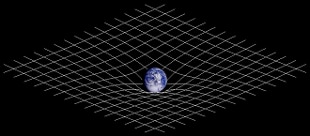Share
16 August 2019A neutron star devoured in one gulp by a black hole: it could be this cosmic catastrophe never seen before, to have generated the gravitational wave that crossed Earth on the evening of August 14th.Last night, we got amazing science data on new @LIGO event # S190814bv with @keckobservatory on #Maunakea. Very thankful to all involved! pic.twitter.com/WJjnlUw946
- UCSC Transients (@ucsctransients) August 16, 2019His signal, which the astrophysicists pursued as the wanted number one, was captured by the three instruments of the international collaboration Ligo-Virgo, but it will take months of data analysis to confirm it, as Giovanni Prodi of the National Institute of Nuclear Physics explains (Infn ).
The search continues for a counterpart in light to our new @LIGO @ego_virgo #GravitationalWaves candidate # S190814bv which was pinpointed to only 23 sq deg on the sky! Here's a skymap with constellations included, thanks to @ LIGO's @chrisenorth https://t.co/L0tiUUrcuK pic.twitter.com/HRstaqzGc0
- LIGO (@LIGO) August 16, 2019The new signal, called S190814bv, "was intercepted on August 14 when it was 11.11pm in Italy," explains Prodi. "That night we celebrated August 15th with a two-hour conference call; we immediately understood that it was a big thing". The data, in fact, came from all three gravitational wave detectors placed on the two shores of the Atlantic Ocean: Virgo, the interferometer at the gates of Pisa of the European Gravitational Observatory Ego (to which Italy participates with Infn ), and the two machines of the US detector Ligo of the National Science Foundation, one in the State of Washingtone the other in Louisiana. Together they made it possible to make a sort of triangulation to frame the area of the sky from which the signal arrived with greater precision: located almost 900 light-years away from us, it is so clean that "the probability that traits of a genuine gravitational wave is over 99% ", Prodi emphasizes with a euphoric voice. "The analyzes conducted in the first 12 hours suggest that we are facing a neutron star swallowed by a black hole: if confirmed, this would be the signal we have been pursuing for some time as the sought after number one of the new multi-messenger astronomy, because so far we had recorded only fusion signals of two black holes or two neutron stars.This would be the first 'mixed pair' and could reveal to us how frequent these binary black-neutron star hole systems are, also providing valuable information on the matter and behavior of stars of neutrons, which are extremely dense and compact objects ".

